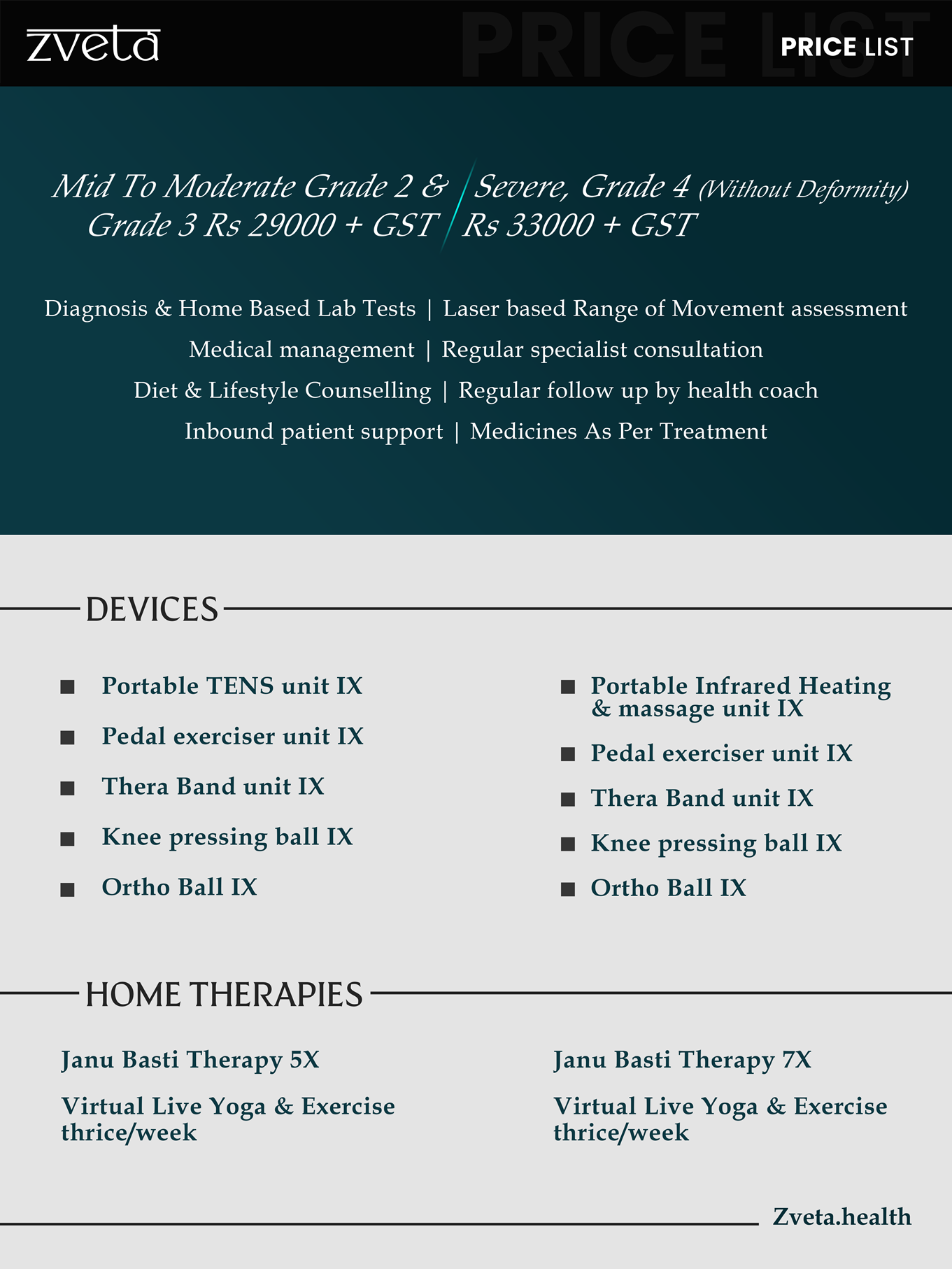Empowering You Towards Better Joint Health
Arthritis, a gamut of over 200 conditions affecting joints, muscles, and bones, casts a long shadow across the globe.
An estimated 1.7 billion people worldwide suffer from musculoskeletal conditions, with arthritis being the most common. In the United States alone, arthritis is the leading cause of disability, affecting nearly 54 million adults.
The situation in India is particularly concerning. Here, a staggering 15% of the population, translating to over 210 million people, are affected by arthritis – a prevalence higher than many well-known diseases like diabetes, AIDS, and cancer.
Unfortunately, arthritis is often shrouded in misconceptions that hinder effective management.
Let’s debunk some common myths and empower you with facts for optimal joint health.
Myth #1: Arthritis is an old person’s disease.
Fact: While the risk increases with age, arthritis isn’t age-specific. According to the Arthritis Foundation, nearly 3 out of 5 adults diagnosed with arthritis are under 65. In fact, juvenile idiopathic arthritis (JIA) is the most common chronic childhood disease, affecting an estimated 300,000 children under 18 in the US alone. In India, arthritis is also not confined to older populations. Studies show that around 15% of the Indian population suffers from arthritis, with a significant number being under the age of 50. People in the age group 20-40 may be prone to rheumatoid arthritis.
Myth #2: It’s just wear and tear – nothing can be done.
Fact: This underestimates the complexity of arthritis. While some forms involve cartilage breakdown (osteoarthritis, the most common type, affecting over 32.5 million adults in the US), others, like rheumatoid arthritis (RA), involve an autoimmune response where the body attacks its own tissues. In India, osteoarthritis affects over 18 million people. Thankfully, various treatment options exist, including integrated approach, medications, physical therapy, and lifestyle modifications. The good news? Research is ongoing, with promising advancements in areas like stem cell therapy and biologic medications offering hope for future improvements.
Myth #3: Exercise is bad for arthritic joints.
Fact: Inactivity can worsen stiffness and pain. Regular, low-impact exercises like swimming (proven to be up to 40% more effective in reducing pain than no exercise), walking, and yoga can strengthen muscles, improve flexibility, and reduce pain by up to 50%. Studies have shown that exercise can even help manage symptoms of inflammatory arthritis like RA. In India, yoga is widely promoted and practiced as an effective means of managing arthritis symptoms, with many reporting significant improvements in flexibility and pain reduction.
Myth #4: Certain foods worsen arthritis.
Fact: While specific dietary triggers may exist for some individuals (for instance, some people with gout may find certain foods like shellfish or red meat exacerbate flares), there’s no one-size-fits-all list of “bad” foods for arthritis. Maintaining a healthy weight, however, significantly reduces stress on joints, especially weight-bearing ones. Losing even a small amount of weight can significantly improve pain and function. In India, a balanced diet rich in anti-inflammatory foods like turmeric, which contains curcumin, is often recommended to manage arthritis symptoms.
Myth #5: Supplements like glucosamine and chondroitin are a cure.
Fact: Research on the effectiveness of these supplements is inconclusive. While they may offer some pain relief, especially for osteoarthritis, the results aren’t definitive, and they should be discussed with a healthcare professional before use. In India, these supplements are also commonly used, but it’s important to approach them with realistic expectations and consult a doctor.
Myth #6: Weather changes have no impact on arthritis.
Fact: Many people with arthritis report increased pain and stiffness during periods of high humidity or cold. While the exact reason is unclear, some theories suggest that changes in atmospheric pressure may affect joint fluid pressure and pain perception. In India, where climates can vary drastically, many arthritis patients report that their symptoms worsen during the monsoon season or in colder regions. Staying warm and dry during these times may help manage symptoms.
Empower Yourself with Knowledge
Arthritis management is a collaborative effort between you and your healthcare provider. Here are some tips that can truly help:
- Seek a diagnosis: Early diagnosis allows for appropriate treatment and prevents long-term complications.
- Learn about your specific arthritis type: Understanding the cause and progression empowers you to make informed decisions.
- Explore treatment options: Discuss medications, physical therapy, and complementary therapies like acupuncture or massage with your doctor. Consider joining a clinical trial to contribute to research advancements.
- Join a support group: Connect with others who understand your challenges and share valuable insights. The Arthritis Foundation offers various support groups online and in communities.
By debunking myths and embracing facts, you can take control of your arthritis journey and live a fulfilling life. Connect with experts at Zveta Health to create a personalized plan for managing your arthritis. Remember, millions manage arthritis effectively, and with proper guidance, so can you.


